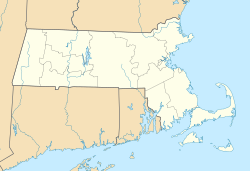Elwood Adams Store | |
 | |
| Location | 156 Main St., Worcester, Massachusetts |
|---|---|
| Coordinates | 42°16′6.6″N71°48′2.5″W / 42.268500°N 71.800694°W |
| Area | less than one acre |
| Built | c. 1831 |
| Architectural style | Commercial Vernacular |
| MPS | Worcester MRA |
| NRHP reference No. | 80000584 [1] |
| Added to NRHP | March 05, 1980 |
The Elwood Adams Store was an historic hardware store at 156 Main Street in Worcester, Massachusetts. At the time of its closing in October 2017, it had been the longest operating hardware store in the United States, having begun business in 1782. [2] The building that the store resided in was built about 1831, and is one of Worcester's oldest commercial buildings. It was listed on the National Register of Historic Places in 1980. [1]


